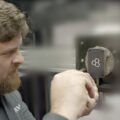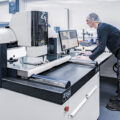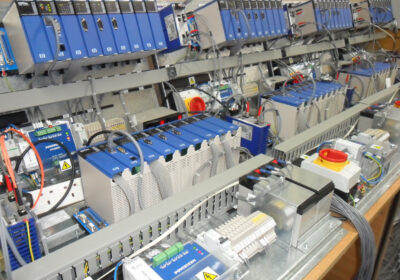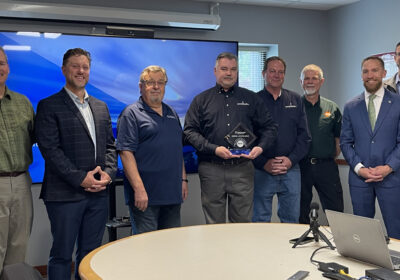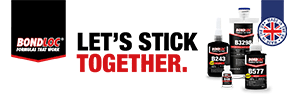~ How the $30 billion+ heated tobacco product market has evolved ~
Since the launch of IQOS in 2014, the heated tobacco product (HTP) market has seen rapid growth, with the global market now worth over $30 billion. The last decade has seen the development of a variety of HTPs including electronic, aerosol and carbon-based products. With the market likely to continue growing – driven by activity in the USA and China – nicotine testing and regulatory consultancy Broughton examines how the market has developed in recent years, and its outlook going forward.
The HTP market began with the major manufacturers each offering a single product as an alternative to combustible cigarettes. As a form of tobacco harm reduction, it first appeared in the 1980s as a response from big tobacco to growing concerns about the harms of smoking.
This involved the creation of devices that would mimic cigarettes such as RJ Reynolds’ (RJR) charcoal tip to heat a tobacco plug such as The Premier. Though this was removed from the market within a year of its launch because of the taste and smell of generated aerosol, the concept was developed into the Eclipse in 1996 – remaining on the market until 2014.
PMI also developed its version with the Accord using a battery-powered heating element to heat a specially designed cigarette. Though this featured a lot of the attributes you would associate with modern day e-cigarettes including electric heating, parental locks and a specially designed stick, it was removed from the market – with its successor Heatbar also failing to succeed commercially.
The first commercially successful HTP came with the IQOS 2.2 in 2014 by PMI, after it had invested more than $6 billion into the product along with research and product development. The device allowed controlled heating of the tobacco substrate to desired temperatures, allowing optimum nicotine and flavour production with a controlled release of chemicals to ensure toxicant reduction. In 2019 it was granted a Premarket Tobacco Authorisation (PMTA) and designated a modified risk tobacco product (MRTP) in 2020 by the Food and Drug Administration (FDA), which allows the company to include the claim it reduces the consumer to exposure to known smoking toxicants.
There have since been improvements for the user. As the original IQOS device used blade technology, subsequent devices like the IQOS Iluma use induction heating – removing the blade and resulting in less breakage and less need to clean the device – making it easier for the consumer to use.
In addition, the use of induction heating has contributed to better battery life, further intending to improve convenience for the user. This is one factor expected to continue to advance in this market as companies continue to emphasise sustainability and energy efficiency. Other ways to enhance the consumer experience include improved integration with their digital technological footprint, also known as digital self, and further modes of convenience that involve less cleaning, less charging and less waiting. However, a big unknown is the effect on banning flavours in some jurisdictions depending on what kind of bans and where they are likely to come into force.
Regulation
Regulation of HTPs varies across the world according to government positions on the need for tobacco control and the importance they place on tobacco harm reduction. For example, the United Kingdom currently has the objective to make the country smokefree by 2030 – specifically reducing the rate to under five per cent – which includes legislation to ensure those born after 1 January 2009 will never be legally sold tobacco.
While much of the focus is on smoking reduction, there is additional legislation on the use of vapes; including strengthening the licensing scheme for retailers, a ban on single-use vapes to deter youth appeal, as well as specific requirements on e-liquid nicotine strength and minimum standards for consumer product safety.
The UK is an example of where light touch regulation is being followed with a firmer regulation to address popularity amongst young people. Light touch regulations can occur with simple notifications of intent to sell to jurisdictions like the USA, which has the full seven-module PMTA process. Some countries, however, such as Australia, India and Mexico have banned HTPs altogether.
The PMTA in the U.S. and the TPD2 notification in Europe are the two most established processes for bringing a HTP to market.
PMTA involves seven core modules featuring administrative information, product summary, product description and manufacturing details, nonclinical data, clinical impact on population and individual health and the environmental impact.

Broughton is a specialist in PMTA Module 3: product description and manufacturing, which requires details of the product’s composition including emissions, manufacturing process and quality control measures. In addition, its technological expertise provided through its automated toxicology data tool, Tox HQ, can help provide the necessary data required on any HTP’s toxicological and pharmacological properties, including any potential risks that may be attached to it.
Though PMTA in the United States is the more costly and lengthy route to market, TPD2 offers a simpler, cheaper and quicker route. Manufacturers need to notify regulators via the European Common Entry Gate (EU-CEG) six months before placing a product on the market.
They must contain a detailed product description, a list of all components and quantities used in manufacture, information on emissions and their levels, available scientific studies on toxicity, risk of addiction and product attractiveness, market research on the preferences of different consumer groups, and other available information. This includes a risk/benefit analysis of the product which should feature expected effects on smoking cessation.
It’s important to understand what is and isn’t required in each jurisdiction, and being able to engage with regulatory experts is vital to product development and will allow for a successful and efficient product launch.
Testing
Testing for heated tobacco products requires specialised expertise and equipment which can take time and is hard to speed up. Included within this is toxicological assessments which evaluates ingredients, analyses emissions, tests thermal degradation and long-term toxicity. Having a chemical repository – such as Tox HQ – that stores the properties of chemicals and hazard assessments and provides a tool for building mixtures and formulations can help provide quick risk assessments that can help streamline the process – and help support documentation submission to the regulator.
The storage and preparation of samples requires conditions specified in ISO5501-1:2024, while conditions within the test laboratory must also be tightly controlled to ISO standards to ensure accurate and consistent data.
With extensive knowledge of regulatory consultancy for the nicotine sector, and laboratory testing experience that adheres to ISO standards, Broughton can help streamline the process that helps bring your heated tobacco product to market. With nearly 20 years’ experience of regulatory and testing experience of the market that has changed during the years, Broughton is well positioned to partner with manufacturers and next generation product developers to help smooth their path to approval. To find out more, visit Broughton’s website.


